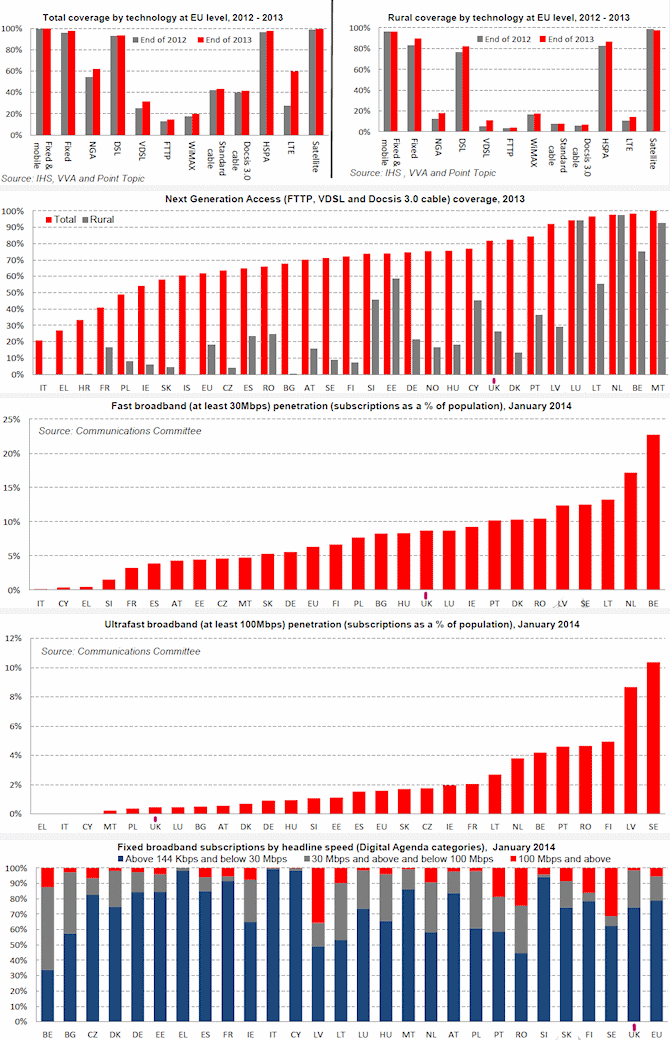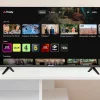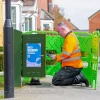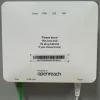UK Broadband Strong in Latest EU 2014 Digital Agenda Scoreboard
The European Commission has today published the 2014 EU Broadband Scorecard, which reveals the United Kingdom’s progress toward Europe’s overall Digital Agenda goal of ensuring that 100% of homes have access to superfast broadband speeds of 30Mbps+ by 2020 (50% must also be taking 100Mbps+). The good news is we’re doing well but rural areas are still lagging.
The latest statistics are based on data gathered to the end of 2013 and they reveal that the number of people who use the Internet at least once per week has increased from 60% to 72% since 2010. Meanwhile 100% of Europeans now have access to broadband connectivity, although it should be noted that the EU includes Satellite as part of this coverage (the figure falls to 97% when you only include fixed line broadband).
Advertisement
Elsewhere 4G based Mobile Broadband availability increased to 59% (up from 26% a year ago) and fixed line superfast broadband (NGA) connections of at least 30Mbps are now available to 62% of the EU population (up from 54% a year ago and 29% in 2010), which rises to 82% in the United Kingdom (26% UK uptake of NGA). But only 18% of rural areas in the EU can get speeds of 30Mbps+.

It’s notable above that “ultra-fast” connections (those providing speeds of at least 100Mbps) accounted for just 1% of all subscriptions (5% in the EU), which is at least a small improvement from the 0.4% recorded some 6-7 months earlier.
However we suspect that the recent speed increases on Virgin Media’s cable network (max of 152Mbps) and the possibility of BT eventually raising their headline FTTC speeds from 80Mbps to 100Mbps+ (once vectoring has been deployed) might eventually start to change this. Meanwhile true fibre optic (FTTH/P/B) lines are also rising thanks to growing efforts by B4RN, Hyperoptic, Gigaclear, CityFibre and others.
A much better overview of the latest results can be found in this 2014 EU Broadband Trends document and we’ve summarised some of the data below (sorry we couldn’t make the images bigger). According to the EC Vice-President, Neelie Kroes, “Most Europeans now live digital lives and they are hungry for more. We have solved the internet access problem.”
Advertisement
Certainly we agree that the issue of providing basic Internet access might nearly be solved, although the figure of 100% could be misleading vs real-world performance and problems with reliability of the connection itself. But these days people are increasingly in need of faster connections and so perhaps the word “solved” is still premature.

Mark is a professional technology writer, IT consultant and computer engineer from Dorset (England), he also founded ISPreview in 1999 and enjoys analysing the latest telecoms and broadband developments. Find me on X (Twitter), Mastodon, Facebook, BlueSky, Threads.net and Linkedin.
« 90,000 UK Homes Must Change TV Aerial to Help Mobile Broadband Grow


















































Comments are closed